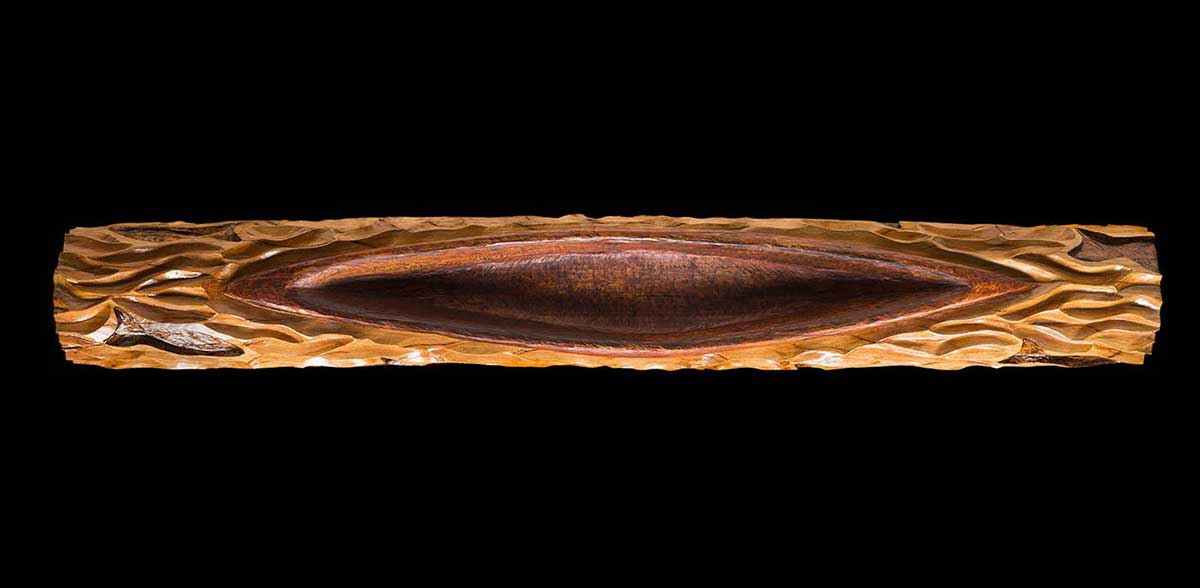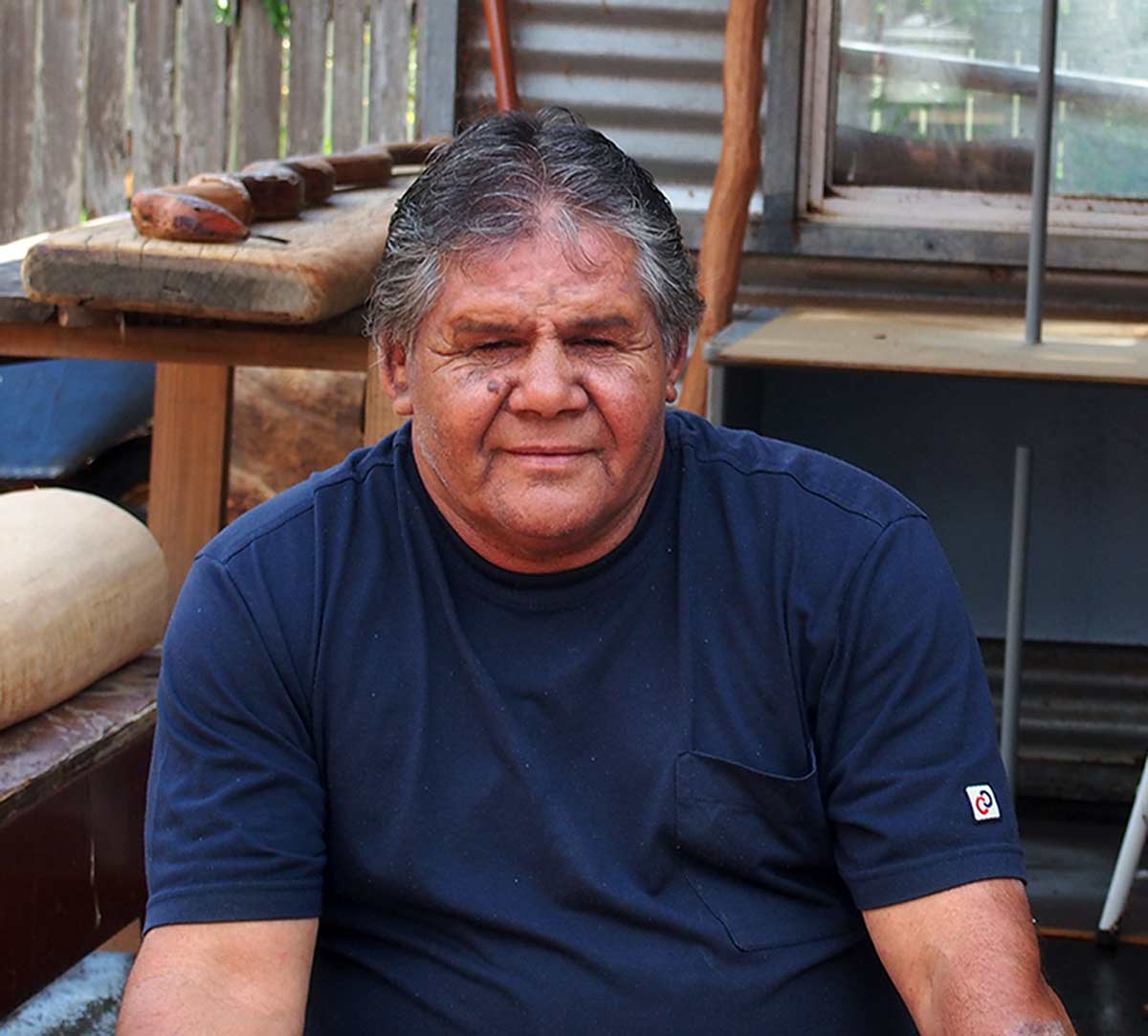Hands on the landscape
Uncle Sonny Simms, Wandi Wandian elder, 2014:
Just up the river here, up around that cave near Longreach, there’s numerous hand stencils there. Some are high, some are children’s hand stencils.
Aboriginal people from the Shoalhaven, on the south coast of New South Wales, have a long tradition of marking the landscape. Hand stencils line the walls of a cave along the Shoalhaven River, and the trunks of trees were once patterned with carvings. Noel Wellington, a contemporary Jerrinja artist, continues this tradition.
Noel Wellington, Jerrinja, 2014:
I’m expressing my identity within my art through these log carvings ... I feel that I am reflecting back on my Aboriginal ancestral history of tree scarring.
Marks of identity are also found on shields. Quaker James Backhouse, who visited the Shoalhaven in the 1830s, described the hand marks on a shield from there:
James Backhouse, Narrative of a Visit to the Australian Colonies, 1843:
The figure of a hand is occasionally depicted, by means of a white powder, thrown on before the black is dry, or the whole is dotted with white.
The hand-stencilled shield (opposite) was collected by Henry Moss, who displayed Aboriginal objects from the Shoalhaven at exhibitions in Australia and overseas.
Old objects

This shield, exhibited at the 1862 International Exhibition in London, likely formed part of a display of ‘Aboriginal weapons’ from the Shoalhaven district supplied by prominent Nowra resident Henry Moss. Moss also sent samples of timber, minerals, arrowroot and flour made from burrawang (cycad palm) nuts, for which he received an exhibitor’s silver medal.
After the exhibition closed, English collector Henry Christy bought this shield and other display items from around the world. In 1869 he bequeathed more than 10,000 items, including this shield, from his personal collection to the British Museum.
New objects
Noel Wellington, Jerrinja, 2014:
Listening to me grandfather, he was telling them how his father made a canoe. Well, I’m going to do that on a log, with fish around it. That sort of stuff – it comes from our old people. I try to reflect all that within me art.
Noel Wellington created this pole to depict the main foods that Jerrinja people have always relied on, and the continued significance of the Shoalhaven River and its riches.
Dennis Foley, Gai-mariagal elder, 2015:
My father fished Sydney Harbour and my mother’s family fished there … they had to, to provide for their families.
You may also like


